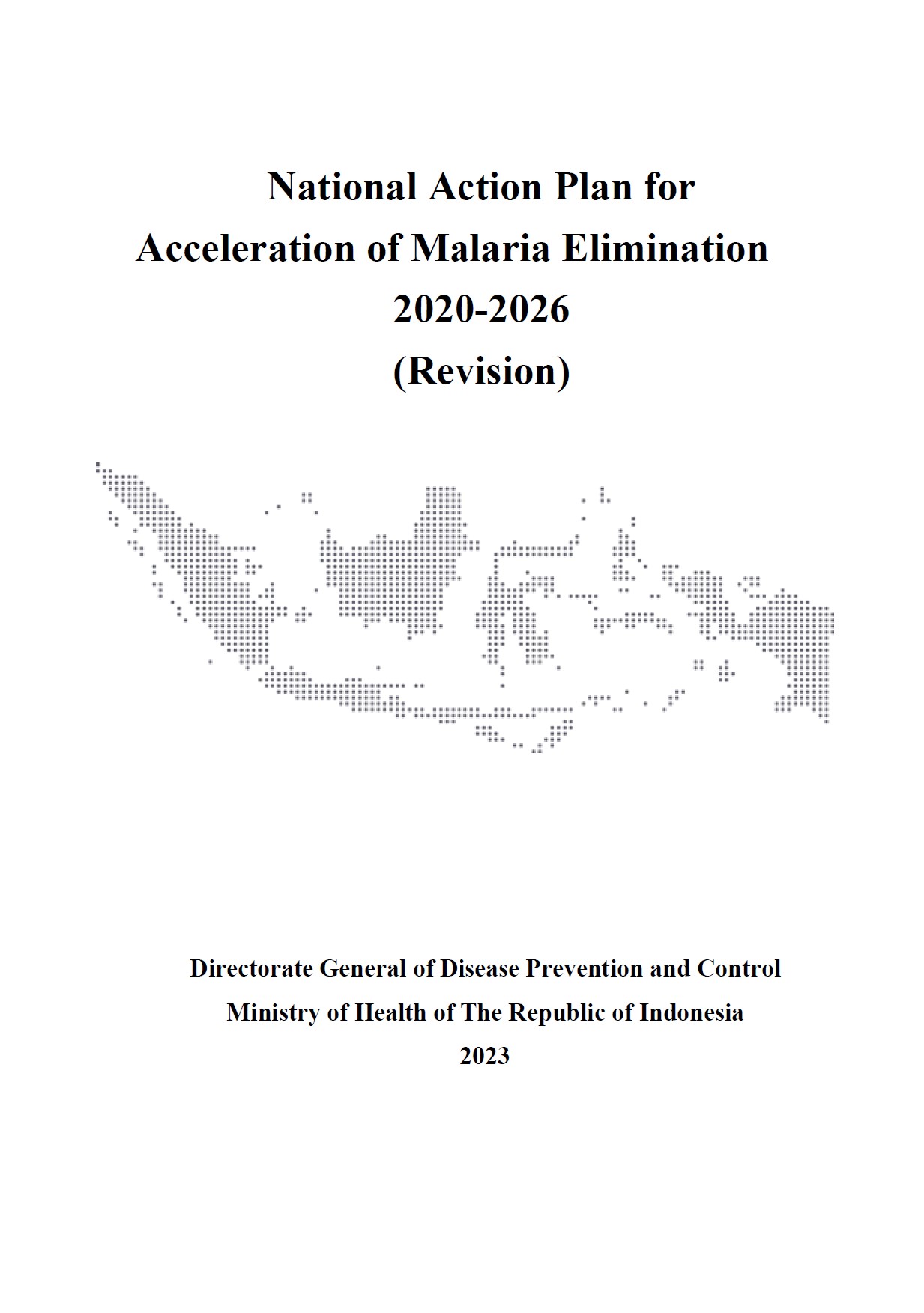National Malaria Strategic Plan (NMSP) of Indonesia: 2020 – 2026
Countries: Indonesia
Published: 01/07/2023
The existing National Action Plan on Acceleration of Malaria Elimination in Indonesia (NAP-AMEI) for 2020-2024 was no longer feasible given the circumstances of the malaria programme after the COVID-19 pandemic. Out of the three specific targets set in the NAP-AMEI, only one was achieved.
The Ministry of Health (MOH) had just endorsed the NAP-AMEI 2020-2024 document in February 2020 when the COVID-19 pandemic was declared by WHO. This led to significant disruptions in malaria services, such as a reduction of over 30% in malaria case detection, delays in distributing long-lasting insecticidal nets (LLINs), and stockouts of malaria drugs due to companies reducing the medicine production and transportation delays. These factors contributed to the failure in achieving most of the NAP-AMEI targets.
To assess the post-COVID-19 malaria programme situation, the National Malaria Control Program (NMCP) and WHO conducted a midterm program review (MTR) in August and September 2022. The review revealed that the goal of malaria elimination by 2030 would not be achieved if NMCP continued with “business as usual” interventions. The MTR recommended focusing on Papua, the new capital city (Ibu Kota Negara or IKN) that has mobile and migrant populations (MMPs), and ensuring sustainable financing for malaria. The review also emphasized the importance of innovations, particularly in Papua and areas with MMPs.
The MTR findings and recommendations informed the revised NAP-AMEI document, which incorporates adjustments to targets, indicators, and introduces new interventions. The amended plan extends the timeline from 2024 to 2026 for achieving elimination in high-endemic districts and specific targets for Papua. The document now also includes a target for the positivity rate of malaria in Papua, from 32% in 2021 to 17% by the end of 2024. In addition, it extends the target for achieving zero high endemic areas from 2024 to 2026, acknowledging the two-year setback caused by the pandemic.



